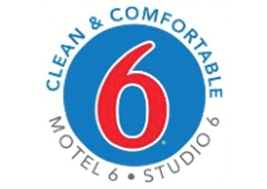Is it worth saving a few bucks on a cheaper part if it could lead to bigger problems later? For laundromat owners, hotel managers, and repair professionals, that decision comes up often. The type of part you choose, whether OEM or aftermarket, will influence equipment reliability, efficiency, and lifespan. Below, we’ll outline the key differences so you can make the best decision for your laundry operation.
What Are OEM and Aftermarket Laundry Equipment Parts?
OEM stands for “original equipment manufacturer.” These parts come directly from the brand that built your washer or dryer.
Aftermarket parts are made by third parties and are often cheaper. They may look the same, but they are not always made to the same standards.
Why Does OEM Matter for Your Laundry Machines?
OEM parts are made for your machine. That means they fit right, work right, and last longer. We only sell OEM parts on our site because of the risks we’ve seen with aftermarket options.
Here’s why we trust OEM:
- One-year warranty from the manufacturer
- Tested for life expectancy
- No guesswork about fit or function
- No risk of electrical shorts or damage
Pro Tip: Some aftermarket parts can cause shorts, fires, or damage to your machine. OEM parts are designed to avoid those problems.
How Much Do OEM vs Aftermarket Laundry Equipment Parts Cost?
Aftermarket parts often seem like a good deal. But you’re usually saving just a few dollars per item—not hundreds.
Here’s what we’ve seen:
- A lower-end generic part may save you $10 to $30
- No warranty or quality check comes with that saving
- OEM gives you long-term value and service support
Key Takeaway: In most cases, the small savings on generic parts don’t match the risk or the hassle if something goes wrong.
Need expert help with laundry equipment parts? Contact RJ Kool for a free consultation. We’ll help you choose safe, tested parts that keep your machines running without issues.
Do Aftermarket Parts Cause Problems?
They can. Some of the aftermarket parts we’ve seen come from unknown sources overseas. There’s little or no quality control. You never know what you’re getting.
Here are the issues we’ve run into:
- Parts failing early
- Causing electrical damage
- Poor fit leading to more repairs
- Machines shutting down in the middle of busy laundry hours
If you’re running a hotel or a laundromat, that kind of risk can shut down your operation fast. Saving $20 on a part isn’t worth it when you lose hours of income or face angry customers.
When Can You Use Generic Parts?
We understand that cost matters, especially for owners of multiple machines. We do offer some generic parts for customers who request them.
But we’re always clear:
- There’s no warranty
- We can’t guarantee long-term performance
- These parts are best for non-critical use or backup units
If you run 50 washers and don’t mind one or two going down, generic parts might work. But for machines that must run daily, OEM is the smart choice.
Why We Recommend OEM Parts First
We’ve seen how OEM parts perform in the field. They go through factory testing, supplier reviews, and long-term use checks. That means fewer surprises and more uptime for your machines.
Here’s what you get with OEM:
- Fast replacements if anything fails
- Fewer breakdowns over time
- Safer equipment for your team or guests
- Support from the manufacturer if there’s an issue
In most cases, we rarely see an OEM part fail within a year. That’s why we back them fully.
In Summary
Choosing between OEM vs aftermarket laundry equipment parts isn’t just about price. It’s about trust, safety, and long-term performance. OEM parts give you tested quality, a full warranty, and fewer headaches down the road.
If you’re ready to get the most from your machines, let us help you find the right part.
Contact RJ Kool today for a free quote or to learn more about our OEM laundry equipment parts.











